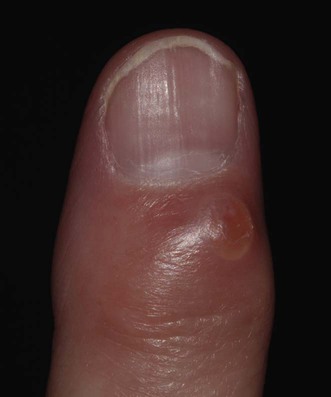Myxoid cyst

First-line therapies
Second-line therapies
Third-line therapies
The most likely course of action after failure of surgery is either to repeat the surgery or to modify the surgical approach to include osteophyte surgery if these were not treated in the first instance. If a CO2 laser is available this might also be chosen, given the good results reported in the small published series. Alternatively, sclerosant could be used, although again, multiple treatments could be anticipated.





 Cryosurgery
Cryosurgery Repeated puncture
Repeated puncture Laser therapy
Laser therapy Sclerosant
Sclerosant Surgery
Surgery Infrared photocoagulation
Infrared photocoagulation Flurandrenolone tape
Flurandrenolone tape
